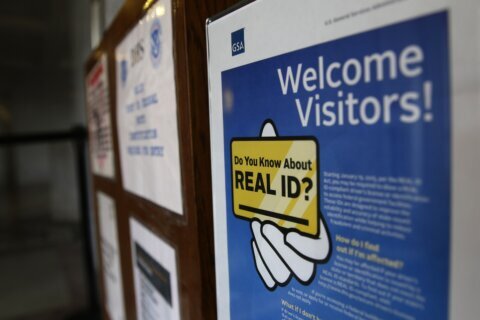COLLEGE PARK, Md. — In the weeks since a high-profile press conference to address three pedestrian fatalities near the University of Maryland, several measures to increase safety have been put into place.
At the beginning of the month, the State Highway Administration (SHA) lowered the speed limit from 30 to 25 mph.
“Traffic safety is a two-way street. Many of these crashes can be prevented by more attention on everyone’s part,” says SHA spokeswoman Lora Rakowski, who met with College Park officials this week.
As of 12:01 am Saturday, seven speed cameras in the City of College Park that ticketed drivers Monday to Friday from 6 a.m. to 8 p.m. now operate 24 hours a day, seven days a week.
Four of the cameras are on US Route 1, including two between Fraternity Row and Hartwick Road. The camera near Hartwick Road even has an LED speed display, telling drivers how fast they’re going.
Drivers will receive tickets from these cameras between Fraternity Row and Hartwick Road at 12 mph over the limit, or 37 mph.
“After three fatalities, it was felt that by lowering the speed limit and enforcing it more strictly, we would hope to reduce near misses and pedestrian fatalities,” says Bob Ryan, Director of Public Services in College Park.
New message display boards are up in both directions of Route 1, entering College Park from Riverdale Park, and after MD 193 from the Capital Beltway.
College Park always had the power to use the cameras without restrictions. Maryland law distinguishes between K-12 schools and university campuses. At the time, lawmakers argued that K-12 students are under parental supervision after 8 p.m. and on weekends, whereas college students tend to visit bars or restaurants late at night and on weekends.
But while most of the cameras on University Boulevard and Route 1 are seen as a positive, some critics could have a problem with one camera on Metzerott Road.
WTOP Ticketbuster profiled the camera last year, when John Bressler received a speed camera ticket on the edge of two different speed limits. The city moved the camera to Metzerott Road and St. Andrew’s Place, but the camera still remains about a mile from the main campus.
“There is a lot of off campus housing. There’s a housing development that is dense with off-campus student rental houses. Also apartment complexes where students live closer to University Boulevard on Metzerott,” says Ryan.
“There are no sidewalks, no bike paths and there is a narrow shoulder. So we’re trying to slow people down,” he adds.
But critics could argue that if pedestrian safety is such a problem, then why not build more sidewalks and widen the shoulder? The problem is that Prince George’s County owns Metzerott Road, not the city of College Park. Thus any project would have to compete with dozens or hundreds of other projects in Prince George’s County for money, then go through a long planning process before anything is built.
Other changes will target pedestrians.
SHA and College Park officials acknowledge that while drivers operate a vehicle that can inflict injury, all three pedestrians killed were jaywalking at the time. Both agree that the responsibility is equally shared between drivers and pedestrians.
SHA is installing a median fence between Hartwick Road and Knox Road that will make it virtually impossible to cross mid-block. Work on the fence could begin Monday and will be complete before the end of August.
“The fences will encourage people to walk down to the nearest legal crosswalk and cross the street where drivers expect them to be,” says Rakowski.
Sources have told WTOP that they hope SHA will consider expanding the median fences up to Fraternity Row. For now, other blocks have signs in the median with a pedestrian and a big red circle with an X through it.
SHA also plans to add a pedestrian signal at Route 1 at Hartwick Road in October. The signal serves a similar function to the HAWK signals that DDOT installed in the District.
“The light will be flashing red on Hartwick and flashing yellow on Route 1. But when someone activates the light, it will turn red on Route 1 to stop drivers and allow the pedestrian safe access to cross the street,” says Rakowski.
Officers will also be watching for jaywalking during the fall semester until students get the message about crossing in a legal spot.
“It’s part of a big campaign with t-shirts that restaurant employees will be wearing, along with signs in the windows. Officers will also issue warnings for jaywalking, then they will start ticketing. People will be getting tickets,” says Ryan.
Speed camera tickets are $40. Jaywalking tickets can also be $40.
Follow @WTOP on Twitter and on the WTOP Facebook page.









